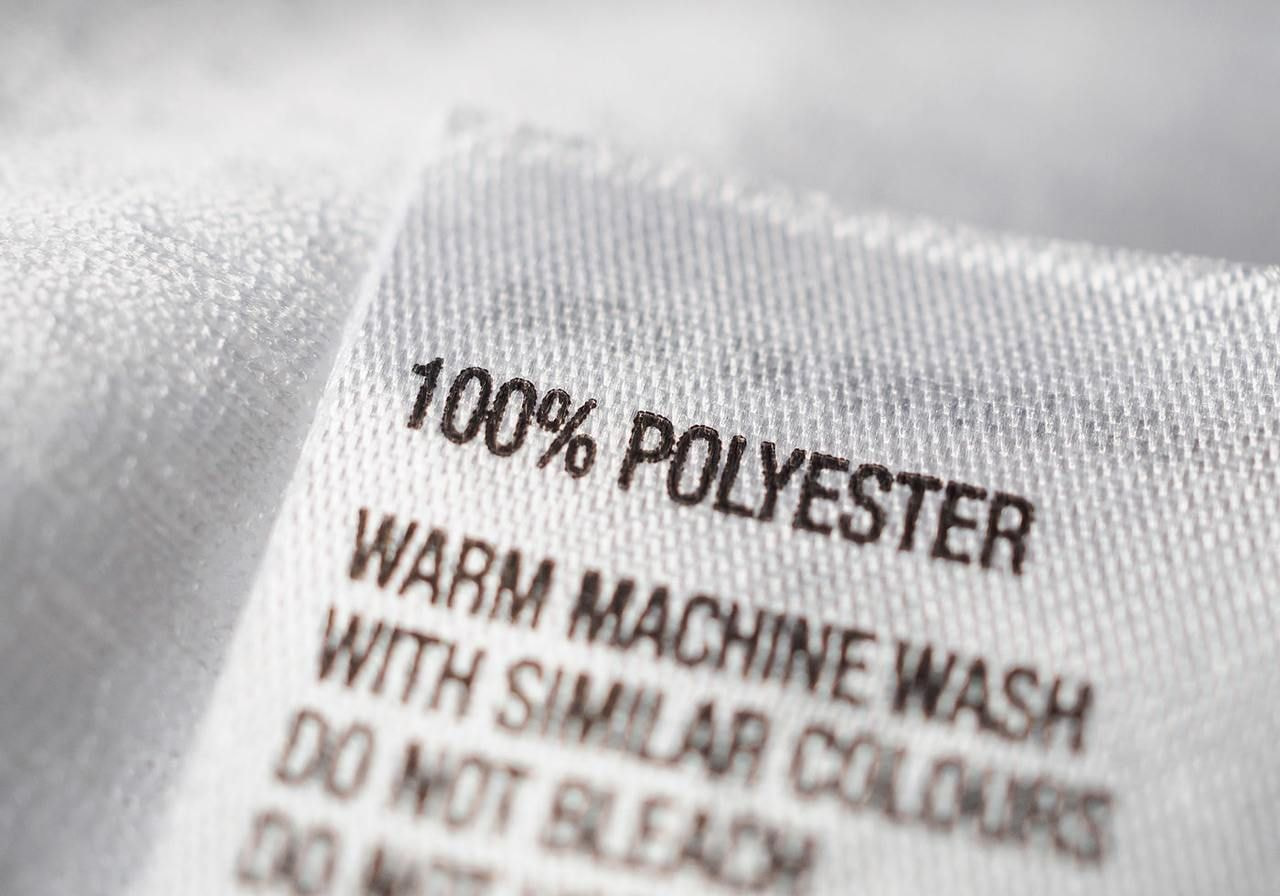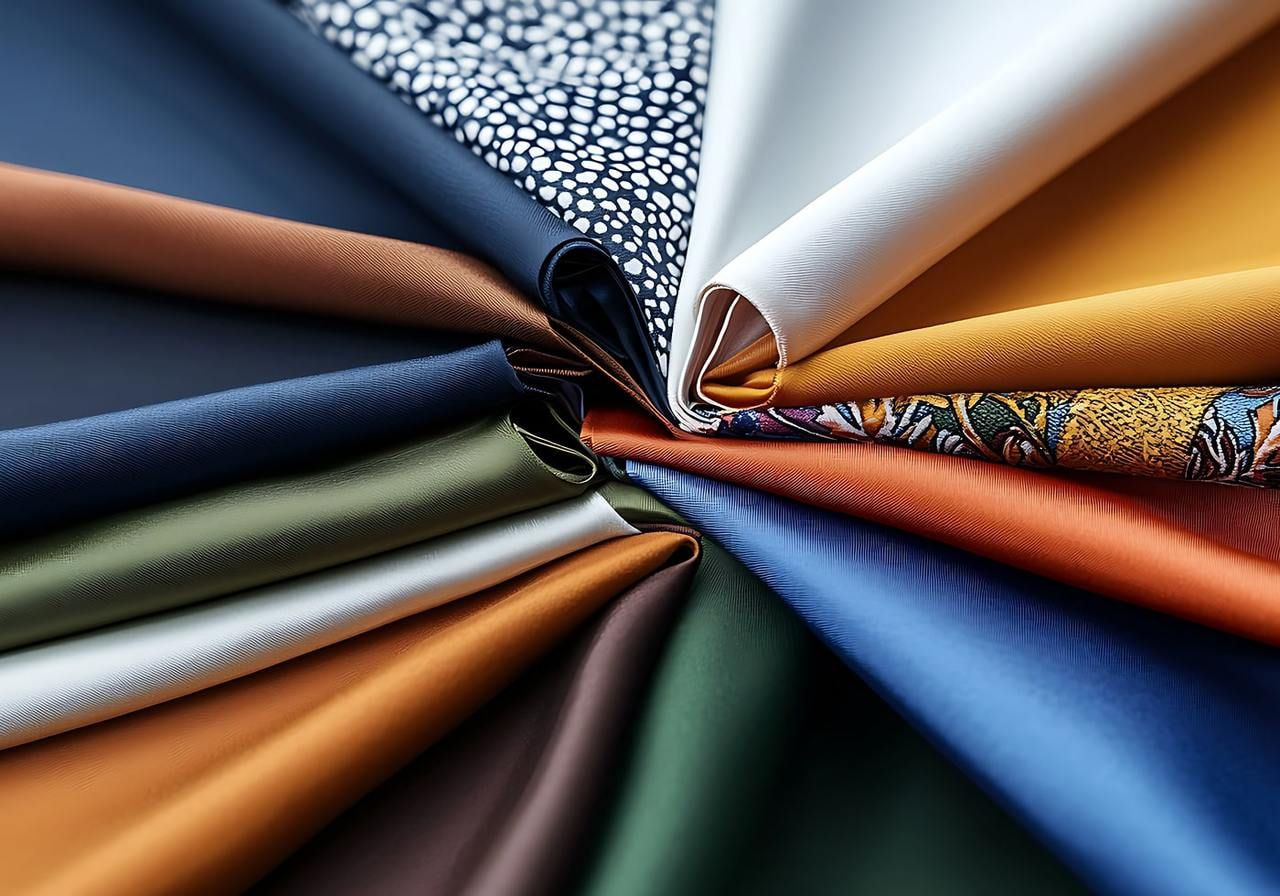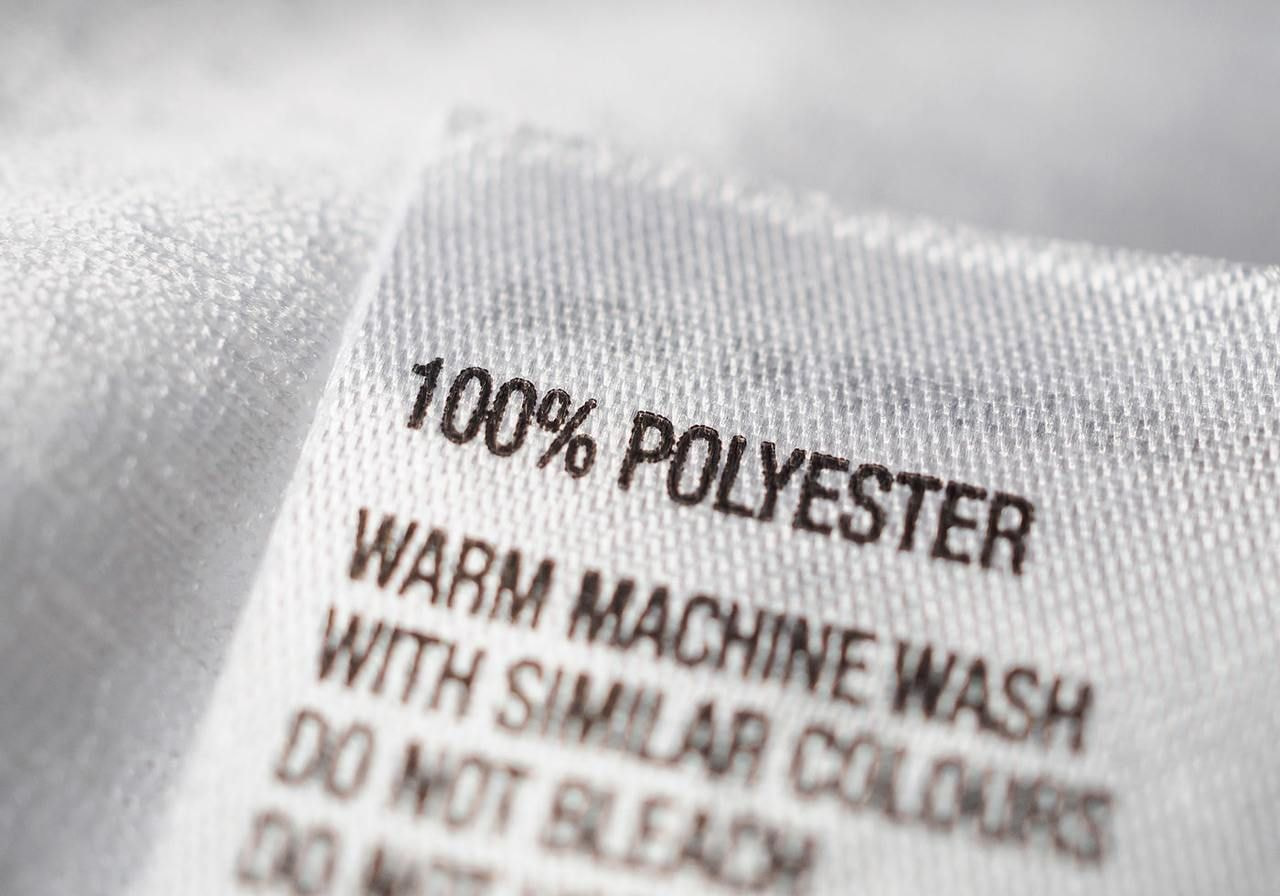What is polyester made of?
Polyester is made from polyethylene terephthalate (PET), a stable fibrous compound formed through a chemical reaction between the following components.
These substances are combined in a process that forms molten polyester polymer, which is then cooled, chopped into chips, and melted again to create polyester yarn, polyester staples, or polyester tow.
The resulting material contains the ester functional group, which helps give polyester fabric its strength and resilience in textile fiber form.
How is polyester fabric used?

Polyester’s technical performance and versatility make it a staple across industries – from fashion to manufacturing. Whether you’re designing high-functioning apparel or durable home decor, polyester’s properties deliver on both form and function.
-
Fashion and apparel: Polyester material clothes like leggings, jerseys, and outerwear are favored for their moisture-wicking ability and durability.
-
Home textiles: Its wrinkle resistance and strength make polyester ideal for everyday home items like curtains, rugs, bed linens, and upholstered furniture.
-
Industrial applications: Resilience under stress means polyester is often used in fiberfill fibers, ropes, conveyor belts, seatbelts, and insulation.
-
Print-on-demand apparel: Polyester’s smooth surface makes it an excellent canvas for sublimation printing, allowing for sharp, long-lasting designs. Learn more in our guide to cotton, polyester, and blended fabrics.
Pros and cons of polyester fabric

Like any material, polyester comes with trade-offs. Here’s a closer look at the key advantages and drawbacks of working with polyester.
Pros
-
Durable: Doesn’t shrink or stretch easily and resists wear
-
Lightweight and travel-friendly: Holds its shape and appearance
-
Retains color well: Vibrant even after multiple washes
-
Wrinkle-resistant and quick drying: Doesn’t absorb moisture like natural fibers
-
Affordable and scalable: Often cheaper than cotton yarn or wool
-
Versatile: Can be spun into staple fibers, yarn-like material, or molded into polyester plastic
-
Moisture-wicking: Perfect for athletic wear
Cons
-
Environmental cost: The polyester production process depends heavily on fossil fuels and is responsible for 57% of global fiber production, emitting high levels of CO₂
-
Microplastic pollution: Each polyester garment can release up to 700,000 fibers per wash, contributing to water pollution and marine harm
-
Less breathable: Can trap heat, sweat, and smells, especially in sportswear
-
Static build-up: Attracts dust and pet hair, especially in dry environments
-
Poor breathability: Less comfortable than natural fibers in warm weather
If sustainability is a core value for your brand, consider the environmental impact when selecting between virgin polyester and recycled polyester.
“I have judged thousands of makeup bags, brush rolls, and spa uniforms for the Global Makeup Awards, so I see polyester’s strengths and weaknesses every time a product is washed, stained, and stress-tested beside natural fibres.
The impact on the planet is at the centre of every conversation now. Fresh polyester begins with crude oil, then passes through energy-hungry reactors that emit greenhouse gases and wastewater.
The encouraging news is that engineers and designers have moved from apologizing for these flaws to solving them. Recycled polyester, often labelled rPET, starts as discarded soda bottles and trims demand for new fossil resources while turning landfill clutter into useful fibre. Some mills have perfected dye methods that rely on pressurized gas instead of water, so they cut both consumption and effluent. Solar power and wind farms now feed entire production lines, shrinking the carbon footprint before a single yard ships out.”

Dominique Tufa
Founder and Beauty Consultant, Global Makeup Awards



